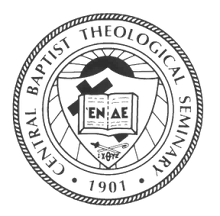Yesterday was Trinity Sunday, traditionally celebrated the week after Pentecost. The Spirit has come in fullness, and the church recognizes the three-fold cadence of the divine life. (I do not imagine that many Baptist churches acknowledged this aspect of the Christian year; we have barely learned to extend Eastertide to Ascension.) All schoolmarm finger-wagging aside, I want to encourage this liturgical practice as a way to form congregational life more deeply. We need to grow in our understanding that our lives are signed as imago trinitatis, showing forth the generativity, diversity, and hospitality of the Triune God.
Dwelling eternally in the richness of relationship, God has a history with this world and discloses divine identity as the Creator, Christ, and Comforter. To put this in proper theological terms: God’s internal life as Trinity is theologia, and God’s history with creation is oikonomia. As Catherine LaCugna observed in her thoughtful text, God for Us, this distinctive confession of Christians has been sidelined as an esoteric doctrine rather than a doctrine with pastoral function in the life of the church. She argues that as long as theologians focused on theologia—to the neglect of oiknomia—the doctrine of the Trinity was defeated, i.e., it had no practical value for Christians.
I believe that the Trinity is the most practical of all the doctrines, essential to Christian identity. The doctrine basically narrates God’s activity in creation, redemption, and consummation, summarizing the unified activity of God in the drama of salvation. God is One, to be sure, yet communicates the divine life as Abba, Son, and Spirit. Christians worship God as creative power, saving love, and ecstatic transformation. God sends, God comes, and God abides; the Trinity describes how God is with us, always, and how our lives are drawn into the divine movement.
Emblazoned on the door of the Baugh-Marshall Chapel at Central is a 13th century symbol for the Holy Trinity. It depicts both the unity and diversity of the One God, Deus, who is revealed as Pater, Filius, and Spiritus. The Latin words est and non est interpret the affirmations of the Athanasian Creed, the first creed which confessed each as fully God yet discrete modes of divine presence. Each is God, yet each is a distinctive expression of the One God. The emblem portrays the dynamic movement (perichoresis) of the Triune God, who creates space for us. Perichoresis is a Greek word that describes the mutual indwelling of the Triune God.
One of the great insights of the Reformation was that the church is ever being reformed. Our part of the ecclesial family needs to become robustly trinitarian so that we might participate in the life of God more fully. May “the grace of the Lord Jesus Christ, the love of God, and the communion of the Holy Spirit be with all of you.” Amen.
Molly T. Marshall
The community of Central is perichoretic, as well; that is why we are open, inviting place of hospitality. There is room for you! Continue visiting our website to learn about our
mission.

No comments:
Post a Comment